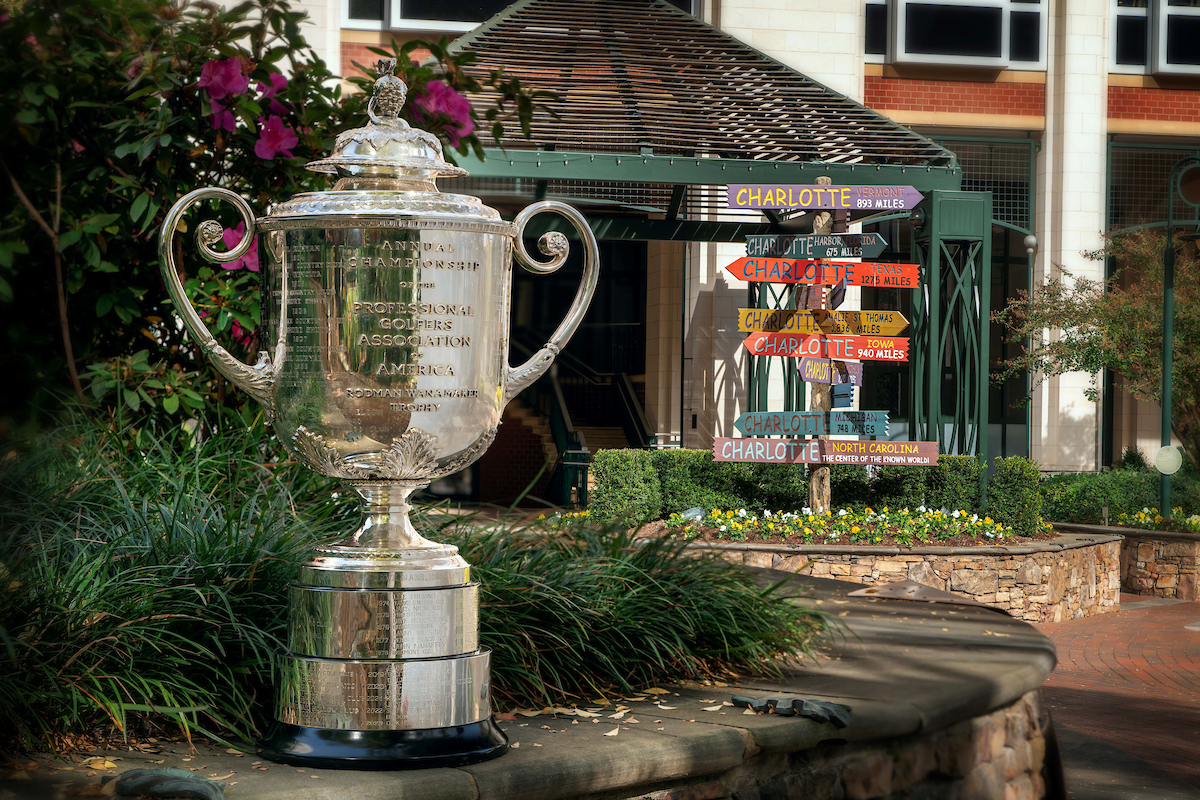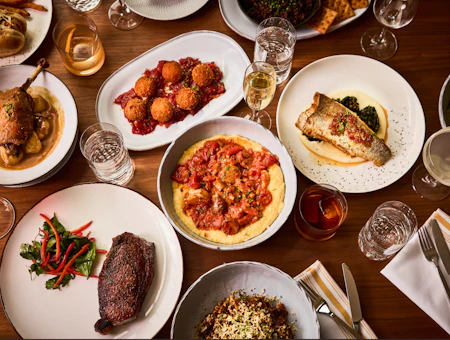Charlotte Golf Courses with a Rich History
Get the backstory of some of Charlotte’s oldest golf courses.
by Jamie Killian
There’s no shortage of ways to golf in Charlotte. With private clubs, public greens and plenty of fun, Charlotte has made a name for itself among the golf greats. Behind the golf fanfare is a rich history, from bootleggers to desegregation, that can be found within some of the public courses around the city.

History of Golf in Charlotte
Charlotte is home to a course named for barrier-breaking PGA Tour member, Charlie Sifford, the first Black man to play as a member of the association. Dr. Charles L. Sifford Golf Course,, which opened in 1929 as Charlotte’s first municipal course, was originally a whites-only course. That all changed when a local police officer, Ray Booten, tried to play in 1951. After years of legal battles, the course integrated making it the perfect namesake for Sifford, who later won two PGA tour titles as well as a Senior PGA Championship.
The Dr. Charles T. Sifford Golf Course at Revolution Park is a nine-hole municipal course on the west side of the city and is one of five public courses that fall under the umbrella of Ratcliffe Golf Services. The family-owned group of courses comes with its own unique history – one that led to the opening of Seven Jars Distillery, the perfect place to grab a drink after you’ve hit the links.
The story starts during the Prohibition era with prolific bootlegger, Frank Ratcliffe. He owned a nightclub downtown off East Sixth Street called The Flamingo Club, the site of which is now Discovery Place Science. There, he met his wife Velma and began to pursue more family-oriented ventures, including owning Paradise Valley Golf course.
After his passing in 1977, Velma revealed that the patriarch had buried a family secret on the land. When the family sold the land in 1984, Velma’s sons convinced her to let them dig and it didn’t take long before they discovered seven mason jars, each containing recipes Frank had used to become a success during his bootlegging enterprise. Those jars, along with a now-legal distillery license, became the basis of Seven Jars Distillery.
However, the Ratcliffe family wasn’t done with the golf business. Del Ratcliffe, the late Frank Ratcliffe’s son, took over the management of Paradise Valley Golf course, along with four other courses that have shaped the landscape of municipal courses in the Charlotte area. Each course offers a unique vantage of the city and something different for players of all skill levels.
Historic Golf Courses in Charlotte

Charles T. Myers Golf Club
Area: East Charlotte
This course was developed, surprisingly, on the old Harrisburg Landfill and is now a beautiful course, designed by Bill Love, accessible for all skill levels. It is named for county commissioner Charles T. Myers who was instrumental in the development of the land and its designation to be used as a public course.
Dr. Charles L. Sifford Golf Course
Area: West Charlotte
Each hole here offers a piece of Dr. Sifford’s story so you can continue to learn about his incredible legacy as you play. Don’t have time for a round? You’ll find an expansive practice area and range here to keep your form. With great deals on daily deals on tee times, be sure to check out this hidden gem.

Harry L. Jones, Sr. Golf Course
Area: Southwest Charlotte
This course, with plush Bermuda grass, was designed by Michael Hurdzan and offers a challenge at an affordable price. The course is named after former county manager, Harry L. Jones. This influential Black leader was inducted into the Order of the Hornet, the County’s highest honor, for his contributions to the public sphere.
Sunset Hills Public Golf Course
Area: Northwest Charlotte
Sunset Hills is the perfect place for all players as it offers two courses on site, including a learning course of nine holes made up of par 3 holes with multiple tee boxes. Traditional golfers will enjoy the “Old Course” at Sunset Hills that allows for a round of 18-hole play. Ditch the clubs and bring a soccer ball to play foot golf on the short course, aiming the ball for larger holes alongside the traditional tees.
Article originally written by Jamie Killian. Updates by Arielle Patterson in April 2025.











